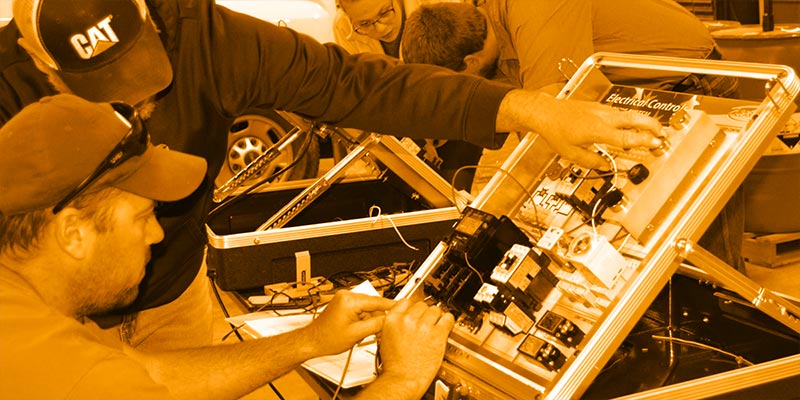OSHA and the good folks at NFPA are always trying to reduce annual injuries (and worse) due to electrical incidents in the workplace. We take these updates very seriously at ETS and update our training accordingly. We’re giving you a summary of the important changes to the 2024 edition of NFPA 70e that every electrical maintenance person should be aware of:
-

ETS takes pride in providing thorough electrical maintenance training with current electrical safety standards. Get your workers electrically qualified in just 4 days!
Expansion of Risk Assessment: The 2024 edition emphasizes the need for a thorough understanding of the arc flash and shock hazards associated with specific tasks. This includes considering factors such as equipment condition, operating mode, and task duration.
- Integration of Human Factors: Integrating human factors into electrical safety programs involves considering various aspects of human behavior, cognition, and physiology to enhance safety outcomes and mitigate risks effectively. Examples:
- Task Design and Ergonomics: Assessing the ergonomic design of work tasks. For example, if a maintenance task requires reaching into tight spaces or lifting heavy equipment, measures can be taken to minimize physical strain and reduce the risk of musculoskeletal injuries. This might involve providing ergonomic tools or adjusting work procedures to promote safer movements.
- Behavior-Based Safety Training: Incorporating behavioral aspects to address human factors. For instance, workers can receive training on recognizing common human errors, such as complacency or distraction, and learn strategies to mitigate these risks. This could involve implementing checklists to improve focus and attention to detail during critical tasks.
- Communication and Teamwork: Electrical safety programs can promote effective communication practices and teamwork strategies to enhance safety outcomes. For example, implementing clear communication protocols for coordinating tasks or conducting regular safety meetings to discuss potential hazards and share lessons learned from near misses.
- Fatigue Management: Implementing policies and procedures to manage fatigue effectively. This might include scheduling regular breaks during long shifts, providing adequate rest periods between work assignments, or implementing fatigue risk assessment tools to identify and mitigate fatigue-related risks proactively.
- Updates to PPE Requirements: The 2024 edition introduces updates to the personal protective equipment (PPE) requirements, including revised tables for selecting appropriate PPE based on task-specific hazards. This ensures that workers have the necessary protection to mitigate the risks of arc flash and shock incidents.
- Enhanced Documentation and Training: This is aimed at improving clarity and consistency in safety procedures. This includes updating training materials to reflect the latest industry best practices and ensuring that workers are adequately trained to perform their tasks safely.
- Incorporation of Technology: The 2024 edition encourages the use of technology to enhance electrical safety programs, such as implementing digital tools for conducting risk assessments, documenting safety procedures, and tracking compliance. This reflects advancements in technology and industry trends towards digitization. Examples:
- Digital Arc Flash Hazard Analysis Software: Instead of manually calculating arc flash incident energy levels, electrical maintenance personnel can use specialized software tools. These tools can analyze electrical systems, determine potential hazards, and provide recommendations for appropriate protective measures. For example, software programs like ETAP or SKM PowerTools offer features specifically designed for conducting arc flash hazard analysis efficiently and accurately.
- Mobile Apps for Safety Documentation and Training: Organizations can utilize mobile applications to streamline safety documentation and training processes. For instance, maintenance workers can access safety procedures, equipment manuals, and instructional videos directly from their smartphones or tablets. Apps like Safeopedia or SafetyCulture iAuditor enable users to create, distribute, and track safety documents and training materials digitally, ensuring easy access and real-time updates for employees in the field.
Final thoughts…
Overall, these changes in the 2024 edition of NFPA 70e are designed to enhance electrical safety practices and mitigate the risks associated with arc flash and shock hazards. At ETS we make sure we all stay compliant and help maintenance personnel get familiar with these updates and best practices in the field.
Related articles:





